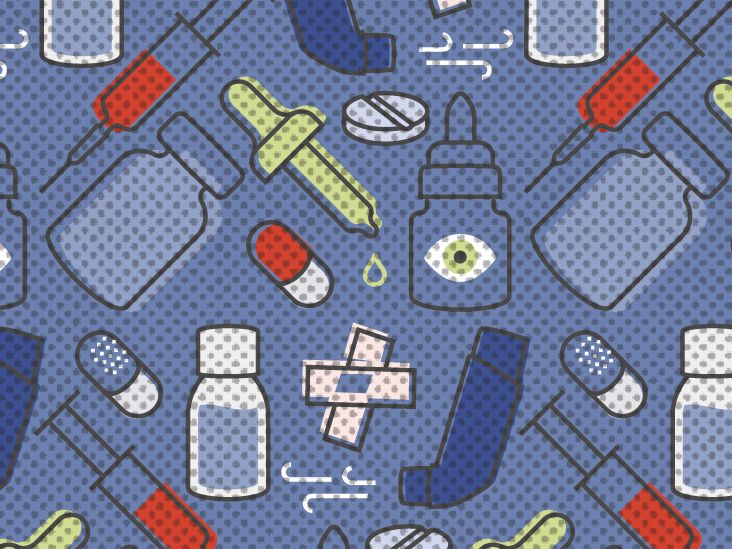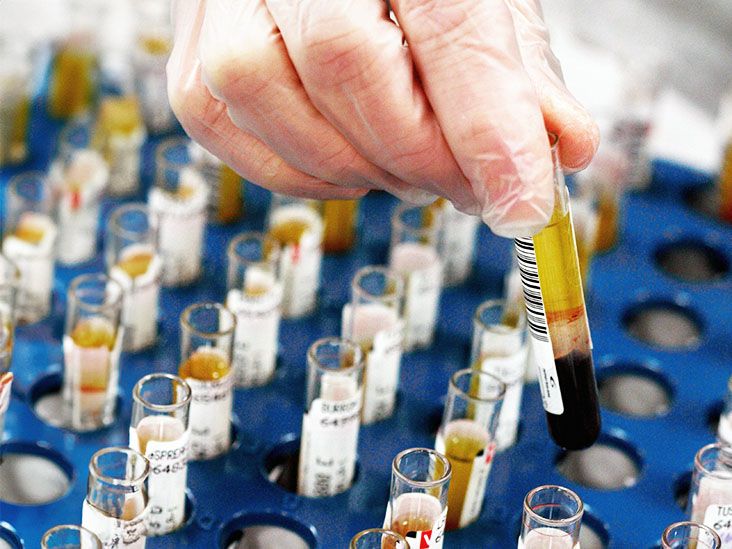Tinea Versicolor Diet: Foods to Eat and Avoid
Tinea versicolor is a common fungal infection of the skin caused by an overgrowth of yeast. It leads to discolored patches that can be itchy or dry. While antifungal treatments are typically used, diet may play a role in managing this condition.
Read on to learn about tinea versicolor causes, symptoms, diagnosis, and how diet can help, along with foods to eat and avoid.
What is Tinea Versicolor?
Tinea versicolor is caused by a yeast called Malassezia that naturally lives on the skin's surface. When certain conditions trigger overgrowth, the yeast infects the top layer of skin, leading to tinea versicolor.
This infection results in scaly, discolored patches that can range from white, pink, tan, or brown. The spots usually form on the chest, back, shoulders, and upper arms in hot, humid climates.
Tinea versicolor is not contagious, severe, or life-threatening. But the rash and discoloration can cause anxiety, discomfort, and self-consciousness in those affected.
Symptoms of Tinea Versicolor
Signs and symptoms of tinea versicolor include:
- Light or dark discolored patches on skin
- Spots that may be pink, white, brown, or tan
- Patches that are flat and scaly in texture
- Itching, burning, or irritation in affected areas
- Patches that get darker or lighter with sun exposure
- Most common on chest, back, shoulders, upper arms
Causes and Risk Factors
Tinea versicolor is caused by overgrowth of yeast on the skin. Several factors can increase risk:
- Hot, humid climates
- Sweating
- Oily skin
- Weakened immune system
- Hormonal changes
- Genetic predisposition
While not contagious through touch, the Malassezia fungus can be transferred between people through skin contact in some cases.
Diagnosing Tinea Versicolor
To diagnose tinea versicolor, a dermatologist will:
- Ask about symptoms and medical history
- Examine skin patches and rashes
- Use a special Wood's lamp to view fungus on skin
- Take skin scrapings to check for yeast under a microscope
This combination of physical exam and lab tests can confirm tinea versicolor. Other skin conditions like vitiligo and pityriasis alba may be ruled out.
Tinea Versicolor Diet and Nutrition
While antifungal treatments are the primary intervention, some dietary modifications may help in managing tinea versicolor by inhibiting yeast growth.
Foods That May Help
Some foods contain nutrients and compounds that may provide antifungal properties against yeast like Malassezia. However, research is limited on their efficacy for tinea versicolor specifically.
Foods that may help include:
- Garlic - Contains ajoene and allicin compounds, which may inhibit fungal growth
- Onions - Contain anti-yeast sulfur compounds
- Probiotics - Can support healthy skin microbiome
- Yogurt - Probiotic effects may inhibit yeast overgrowth
- Apple cider vinegar - Acetic acid acts as antifungal against some yeasts
- Coconut oil - Lauric acid has antifungal and antimicrobial properties
- Pumpkin seeds - Contain zinc, which supports immune function
- Brazil nuts - Good source of selenium to support immunity
A healthy diet rich in vegetables, probiotics, nuts, and plant-based oils may be beneficial. But more research is still needed.
Foods to Avoid
Limiting intake of sugars, refined carbohydrates, and alcohol may help starve the Malassezia yeast that causes tinea versicolor. However, evidence is lacking.
Foods that may worsen tinea versicolor include:
- Table sugar
- High fructose corn syrup
- White bread
- Pasta
- Sugary snacks and desserts
- Beer, wine, and liquor
A balanced diet low in added sugars with plenty of healthy fats, veggies, lean proteins, and whole grains is encouraged. Avoid nutritional deficiencies that could impact immunity.
Tinea Versicolor Treatment Options
While diet can play a supportive role, medical treatment is needed to effectively treat tinea versicolor. Treatment options include:
Antifungal Medications
Physician-prescribed oral or topical antifungal medications are the primary treatment for tinea versicolor, including:
- Ketoconazole
- Itraconazole
- Fluconazole
- Selenium sulfide
Medicated shampoos, creams, lotions, ointments, gels, and pills help clear infection by killing excess yeast on the skin.
Phototherapy
Exposing affected skin to ultraviolet (UV) light under medical supervision can help treat tinea versicolor. Phototherapy helps remove visible signs of infection.
Over-the-Counter Antifungals
Non-prescription antifungal shampoos, soaps, and creams containing ketoconazole or selenium sulfide may also be effective for mild cases. Follow directions closely.
Preventing Tinea Versicolor
While tinea versicolor often recurs, certain lifestyle measures can help prevent outbreaks:
- Practice good hygiene - bathe regularly and scrub affected areas
- Wear loose, cotton clothing in hot weather
- Apply an antifungal or zinc/selenium based soap when prone to flares
- Treat any underlying conditions like oily skin
- Keep skin dry - avoid excessive sweating
- Maintain a healthy diet and active lifestyle
Controlling yeast levels through topical hygiene, nutrition, and antifungals can help prevent recurrent tinea versicolor.
Living with Tinea Versicolor
Coping with tinea versicolor involves a combination approach:
- Take prescribed antifungal medications as directed
- Repeat treatment courses if recommended by your dermatologist
- Use antifungal soaps or shampoos regularly between infections
- Apply over-the-counter creams containing zinc or ketoconazole
- Follow preventive lifestyle and hygiene practices
- Eat a balanced diet and avoid nutritional deficiencies
- See your dermatologist if symptoms persist or worsen
While frustrating, tinea versicolor is very treatable. With a multi-pronged approach including medical treatment, preventive care, and proper nutrition, outbreaks can often be well-controlled.
When to See a Doctor
Consult a dermatologist if you experience:
- Severe, painful, or worsening rashes
- Skin patches that do not improve with treatment
- New areas of discoloration or lesions
- Possible side effects from medications
- Signs of secondary infection like oozing or pus
Skin infections should be evaluated by a professional. Seek medical advice to ensure proper diagnosis and treatment.
The Takeaway on Tinea Versicolor and Diet
What you eat may play a supporting role, but tinea versicolor cannot be cured through diet alone. Medical treatment is key, along with preventive skin care.
Focus on a balanced diet full of vegetables, lean proteins, probiotics, nuts, whole grains, and healthy fats. Stay hydrated. Limit sugars and refined carbs which may worsen yeast overgrowth.
While research is limited, eating nutrient-rich antioxidant foods may help bolster immunity and skin health. Work with your dermatologist for appropriate treatment and prevention strategies.
FAQs
What foods make tinea versicolor worse?
High sugar foods, refined carbohydrates, and alcohol may worsen tinea versicolor by encouraging yeast overgrowth. Limit added sugars, white breads, pastries, sodas, juices, beer, wine, etc. Eat a balanced diet focused on whole foods.
What vitamins help with tinea versicolor?
No vitamin specifically treats tinea versicolor. But vitamins A, C, D, E, B6 and B12 support immune health. Zinc and selenium also boost immunity. A nutrient-rich diet and/or supplements may help prevent recurrences.
Can you get rid of tinea with diet?
Diet alone cannot cure tinea versicolor. Prescribed oral or topical antifungal medications are necessary to treat the infection. But eating a balanced diet low in sugars/carbs and high in veggies, lean proteins, nuts and seeds may help.
What natural remedies help tinea versicolor?
Some natural options like probiotics, garlic, apple cider vinegar, coconut oil, and tea tree oil may help inhibit fungal growth. But medical treatment is still required. Check with your dermatologist before using natural remedies.
Disclaimer: This article is for informational purposes only and does not constitute medical advice. Always consult with a healthcare professional before starting any new treatment regimen.























Add Comment